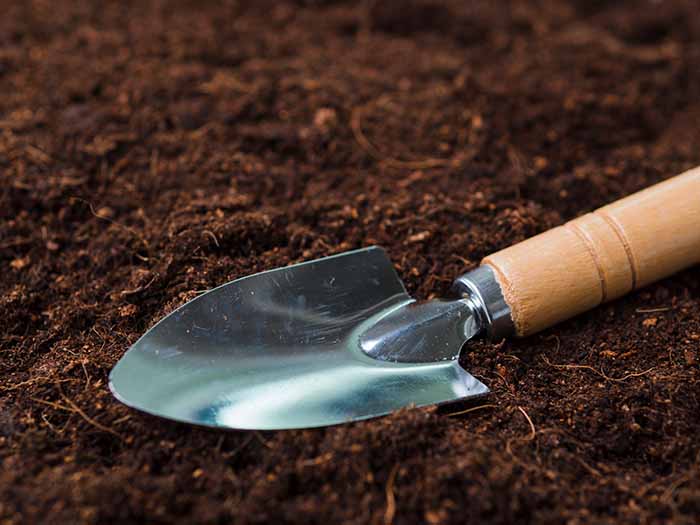Tips for sharpening garden tools successfully
How to store garden tools after use
After the summer and autumn periods, garden tools face the most significant challenges, one of which is sharpening garden tools. Tools with various blades and scissors for pruning, hoes, shovels, and other garden tools, which we use during garden work, require maintenance and preservation of the blades. Sharpen your tools every few weeks, and the grinder will keep a decent edge in good condition.
Source: Freepik.com
Removing dirt, earth debris, or grease that accumulates over time is the first thing you need to do after use. After that, you can process the tools with a bit of sandpaper to remove the blunt edges. Sharpening garden tools will make a difference in sharpness. After that, oil the tool because a little oil on the blade will prevent the formation of rust during the winter. This way, the sharp blade will make it easier to continue using the tool.
Lawn edging tool
The lawn edging tool is specially designed to create neat lawn borders. With the help of this tool, the existing lawn is maintained, or new edges are created along the path. It also makes neat spacing between lawns, flower beds, and other garden areas. Lawn edging tools also require maintenance because they can get quite dirty in contact with the ground and grass, so sharpening garden tools is necessary.
The most common equipment for sharpening garden tools
When sharpening garden tools, it is necessary to consider safety because these are blades, so you need to wear goggles and gloves. Ensure that you do this work without the presence of the family’s youngest members and that your tools are always under supervision.
Try to always have a sufficient supply of materials for sharpening garden tools such as:
- Sandpaper or wire brushes
- Grinder for larger blades
- Sharpening stone for knives and other tools
- Clamp
- Mineral oil for lubrication and protection
Necessary kit for sharpening garden tools
Synthetic oil
This oil serves blades to move smoothly and to prevent rust. A clean and sharpened tool always requires little lubrication.
Abrasives
Abrasives are needed to remove leaf juices that remain on the blades and are difficult to remove only with water. When applied to a washing sponge or wire brush, cleaning will be easy.
Abrasive stone
The abrasive stone is immersed in water for about 5 minutes before use. This stone is then placed on a flat surface, and then scissors, knives, and other garden tools are sharpened on it.
Diamond file
Older blades or blades that are quite blunt require a rough diamond file.
Source: gardensillustrated.com
Additional tips
Sharpening garden tools requires concentration because it is about sharp blades. Always try to have stable support when sharpening. Never disassemble the scissors, as they will never return to the factory condition.
Set yourself up for cleaning and sharpening tools as a serious job, and you will save garden tools permanently.
Sharpening various types of pruning shears
When it comes to pruning shears, there are different types: pruning shears with a long handle, shorter shears for the garden, hedge trimmers with a long blade, etc. All these shears have two beveled edges, upper and lower, which can rust over time. Before you start sharpening, remove rust and dirt, and after that, you can use high-granulation sandpaper to achieve a nice shine of the blade even before you start sharpening.
Sharpening the mower blades
Sharpening garden tools sometimes requires the tool to be disassembled beforehand, as is the case with sharpening mower blades where it is necessary to separate the blades from the mower. When the blade is safely removed, you need a suitable file. Always make sure to sharpen the right side of the blade. In fact, when the knives are separated, it is sometimes difficult to determine in which direction the sharpest edge is turned.
Sharpening garden tillage tools
Garden tools such as spades, shovels, rakes, and hoes lose their blade quality after several years of operation because they become dull and therefore less efficient and potentially dangerous. Consequently, it is necessary to maintain garden tools in an appropriate way and sharpen garden tools.
Spades
Spades with straight edges do not need frequent sharpening, while spades with a curved edge rely on sharp edges to easily penetrate hard ground. Maintenance means occasionally cleaning the rim and sharpening the blade.
Shovel
A shovel is mainly found as forged from steel, but shovels are also made of stainless steel, titanium, alloys, etc. The shovel blade should also be sharpened regularly, as this makes it easier to penetrate the ground. For best sharpness, sharpen the blade edge at a 45 ° angle. It is necessary to remove all unevenness from the blade with a file in order to preserve the blade and reduce the effort when sewing.
Source: Freepik.com
Rake
With light rakes used to collect cut grass and leaves, it is unnecessary to sharpen the teeth, but sharp rakes used to break up hard soil or dig up vigorous weeds are sharpened. These rakes should be sharpened occasionally with small files that can be tucked around the teeth. When it comes to garden tools with teeth, we will also mention the Irgot Broadfork, with the help of which the soil is easily crushed, and weeds are thrown out on the ground’s surface.
Hoe
As a garden tool, the hoe has no slope, so it is necessary to make the cutting edge with a light file.
Hand spatula
Like a shovel, your modest blade can often benefit from thorough grinding and sharpening: a grinder is rarely needed to sharpen smaller, hand-held blades, so this endeavor depends more or less on solid files and a little patience.
As you can see, maintaining garden tools with blades requires occasional blade sharpening activities. Sharpening garden tools extends tool life, making it easier to use sharpened tools.



